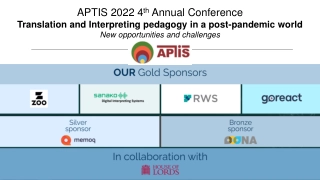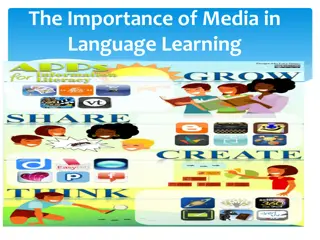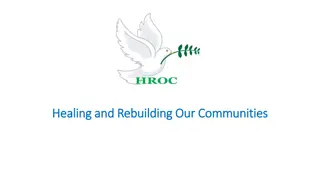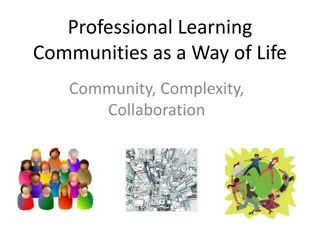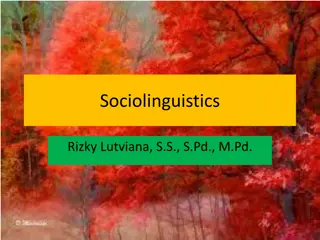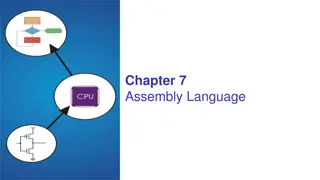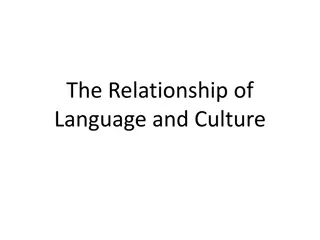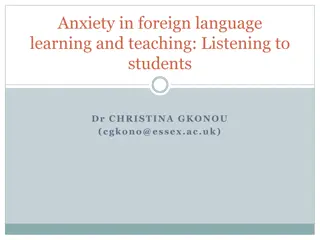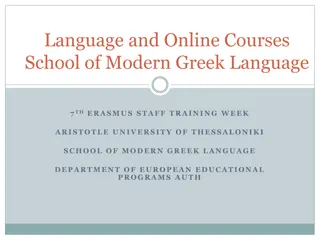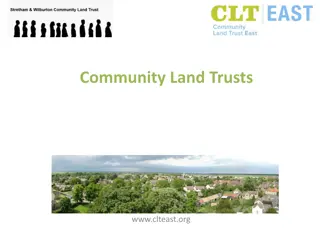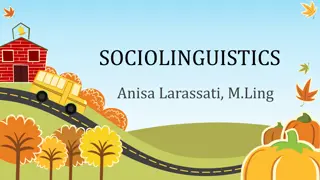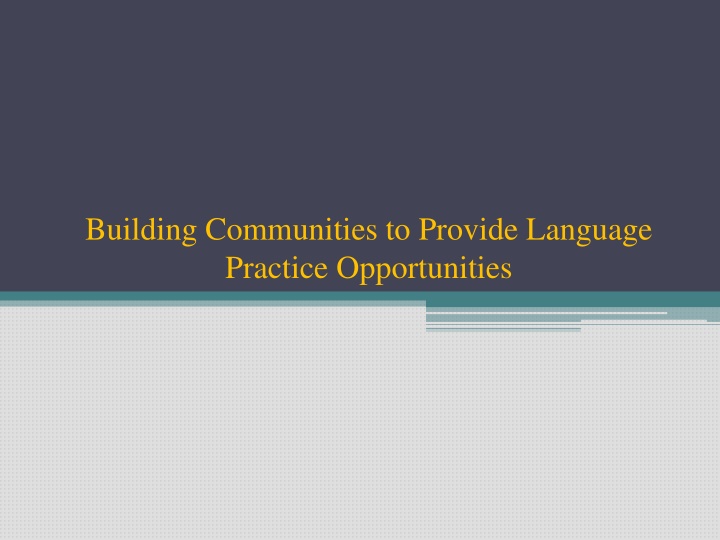
Essential Factors in Second Language Learning and Community Building for Language Practice
Explore the significance of culture in learning a second language, the difference between language acquisition and learning, and strategies for successful community building to provide language practice opportunities. Understand how learning culture aids in acquiring colloquial language skills and why building communities is essential in language acquisition. Discover the role of teachers and administrators in fostering supportive language learning environments.
Download Presentation

Please find below an Image/Link to download the presentation.
The content on the website is provided AS IS for your information and personal use only. It may not be sold, licensed, or shared on other websites without obtaining consent from the author. If you encounter any issues during the download, it is possible that the publisher has removed the file from their server.
You are allowed to download the files provided on this website for personal or commercial use, subject to the condition that they are used lawfully. All files are the property of their respective owners.
The content on the website is provided AS IS for your information and personal use only. It may not be sold, licensed, or shared on other websites without obtaining consent from the author.
E N D
Presentation Transcript
Building Communities to Provide Language Practice Opportunities
Definition of Language Language is a system of communication by sounds, operating through the organs of speech, among members of a given community, and using vocal symbols possessing arbitrary conventional meanings (Pei, 1996)
The Difference between Language Acquisition and Language Learning Acquisition Learning Natural Practice Meaningful Interaction Inductive Coaching Focuses on Communication Produces an Ability Artificial Theory Formal Interaction Deductive Teaching Focuses on Form Produces Knowledge
What is the Most Essential Factor in Learning a Second Language? Culture Nida (2002) believes Biculturalism is even more important than bilingualism, since words only have their meanings in terms of the culture in which they function. (p.82) Culture can only be taught through building communities where the language can be practiced. Montante (2019) maintains that language is not only the ability to utter words with social meaning with fluency or accurate pronunciation. It is also about acquiring the actual cultural context in which cultural identity and the ability to m lange in the desired context facilitates the learner into practical situations whether it be to be accepted by a certain social group of such a language or to strike a deal within a business context.
Learning culture helps to learn colloquial, giving you an access to a certain group of people. Recent Studies reaffirm the importance of socialization in second language acquisition (Dobao, 2014)
How to Make Building Communities Successful? School and district teachers. Building communities requires time to be dedicated during regular teaching hours and should be included in curriculum. Teachers must be dedicated to long-term engagements and have the necessary skills and trainings to deal with a community of learners backgrounds. To beat all the odds, both students and teachers need to embrace the principles of community building (hooks, 1994; Shor, 1999; Swain, 1993; 2000). administration should support from different cultural
References Dobao, collaborative tasks: A comparison of pair and small group work. Language Teaching Research, 18 (4). 497-520. Fernandez, A. (2021). The Role of Community Building in Second Language Acquisition in the Mainstream Classroom. Nida, E. A., & Taber, C. R. (1969). The theory and practice of translation. Publ. for the United Bible Societies by E.J. Brill. A. F. (2014).Vocabulary learning in

